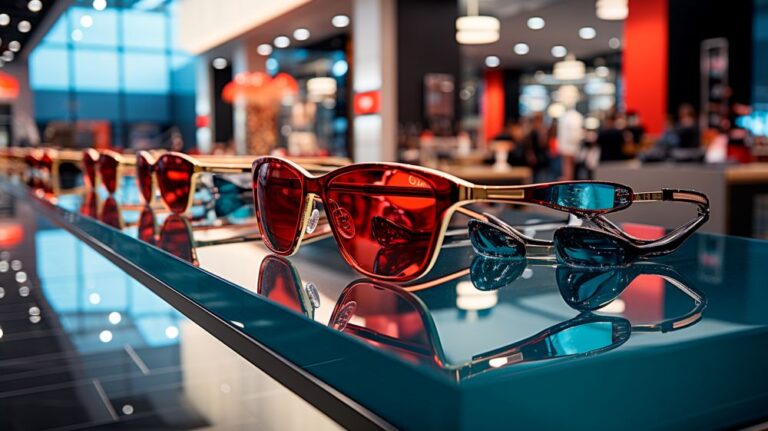For small retail business owners, navigating the world of wholesale accessories can be complex yet highly rewarding. Knowing how to source quality products like fashion jewelry or seasonal goods, such as wholesale sunglasses at reasonable prices, lets small stores compete with major chains. It takes strategic planning and some insider tips to successfully secure sufficient accessory inventory to meet customer demand all year long. Below you will see how to do it best.
Understanding Trends and Seasonality

Before purchasing wholesale accessories, smart business owners research the latest fashion and style trends. They determine which colors, patterns, fabrics, and shapes will likely be most popular in clothing and jewelry in the coming months. They also assess recurring seasonal demands, like the massive summer appetite for trendy sunglasses. Having a keen sense of upcoming trends and entirely predictable seasonal spikes allows small stores to select the most in-demand products months in advance. This ensures sufficient inventory to profit from temporary surges in interest by targeting the hottest accessories first.
Finding Reliable Suppliers
With insight into the accessory categories poised to sell out fast, small retailers can then seek out wholesale distributors, importers and manufacturers specializing in those specific products. Browsing industry trade publications helps identify reputable suppliers praised for responsiveness, consistency and fair prices. The experts at Olympic Eyewear tell us that building strong relationships with a few go-to vendors ensures reliable access to top merchandise in consistently high quality. Retailers should ask trusted fellow store owners in their networks for recommendations of vendors offering good value. Once relationships are established, small stores gain better margins and access to new products.
Negotiating Bulk Discounts
Wholesalers naturally offer far better pricing when retailers purchase goods by the pallet, by the crate or in other large-batch quantities. So small business owners should negotiate the best bulk discounts on whatever quantity realistically fits within their budget and storage capacity. This guarantees ideal profit margins for accessory sales. Retailers must calculate break-even analyses to ensure a sufficient volume of sales within reasonable time frames in order to recoup the large initial investments on high-volume accessory inventory. But buying big in order to score products like fashion earrings or wholesale sunglasses at rock-bottom prices remains a smart move.
Managing Cash Flow Strategically

One catch in relying heavily on wholesale accessory suppliers is the upfront burden of large lump payments for entire crates full of goods. This stretches cash flow for small retailers early on until those products start actively selling. Savvy business owners plan ahead by reserving sufficient capital specifically for bulk wholesale accessory orders placed months before peak demand. They also negotiate extended payment terms with suppliers wherever possible to ease short-term cash flow management. Retailers need robust sales projections to confirm sufficient ROI within designated time periods. With enough planning and number crunching, sizable wholesale accessory purchases prove well worth temporary cash flow stress.
Diversifying Merchandise Categories
Succeeding in accessories wholesale also requires smart product portfolio management across complementary categories that appeal to core customer demographics. For example, stores focused on teen and young adult shoppers likely aim to source plenty of trendy jewelry alongside stylish belts, handbags and hair accessories to present cohesive head-to-toe looks. Boutiques looking to outfit career women for the office may offer luxury watches, briefcases and high-end scarves from the same vendors. Diversity ensures healthy accessory sales by capturing more wallet-share per customer.
Marketing and Branding
Developing a strong brand identity and a coherent marketing strategy is crucial for businesses in the competitive retail market, especially for those dealing in wholesale accessories. A distinctive brand identity helps in setting a business apart from its competitors, making it more recognizable to its target audience. An effective marketing strategy, on the other hand, ensures that the message reaches the intended audience in a way that is both engaging and convincing. This involves a combination of traditional marketing techniques and digital marketing efforts, including social media, content marketing, and search engine optimization (SEO). By clearly defining their brand and consistently communicating their value proposition, businesses can attract and retain their target customers, ultimately driving sales and fostering loyalty.
Customer Service and Feedback

Providing excellent customer service is a non-negotiable aspect of running a successful retail business. It’s not just about resolving issues or inquiries promptly; it’s about creating a positive, memorable experience for every customer that interacts with your brand. Actively seeking and thoughtfully responding to customer feedback is equally important. This feedback can be a goldmine of insights into customer preferences, pain points, and expectations. By listening to their customers, businesses can make informed decisions about product offerings, pricing, and service enhancements. This proactive approach to customer service and feedback can lead to improved customer satisfaction, increased repeat business, and positive word-of-mouth referrals.
Inventory Management
Effective inventory management is a critical challenge for wholesale accessory businesses. It involves maintaining the right balance of stock to meet customer demand without overstocking or running into stockouts. This requires accurate tracking of stock levels, efficient forecasting of demand based on historical sales data and market trends, and strategies for optimizing inventory turnover. Implementing inventory management software can automate many of these processes, providing real-time visibility into stock levels and facilitating better decision-making. By mastering inventory management, businesses can reduce holding costs, improve cash flow, and ensure that customers always find what they’re looking for.
E-commerce and Online Presence
The rise of e-commerce has opened up new avenues for selling wholesale accessories. Establishing an e-commerce website allows businesses to reach a wider audience, operate 24/7, and reduce overhead costs associated with physical retail spaces. However, succeeding online requires more than just setting up a website. It demands an effective digital marketing strategy that includes SEO, email marketing, and social media engagement to drive traffic and convert visitors into customers. Additionally, adapting to evolving consumer shopping behaviors, such as the expectation for seamless mobile shopping experiences and fast shipping, is crucial. An active online presence, combined with an understanding of digital marketing trends, can significantly enhance a business’s reach and profitability.
Competitive Analysis

Regular competitive analysis is essential for staying ahead in the wholesale accessory market. It involves monitoring competitors’ pricing strategies, product offerings, marketing efforts, and customer service approaches. This analysis can reveal gaps in the market, identify emerging trends, and provide insights into what works (and what doesn’t) within your niche. Armed with this information, small business owners can refine their strategies, innovate their product lines, and find new ways to add value for their customers. Competitive analysis not only helps in understanding the market landscape but also in positioning the business more effectively to capture market share.
Adaptation to Market Changes
The retail landscape is constantly evolving, influenced by changes in consumer preferences, economic conditions, and industry regulations. Businesses that remain flexible and adaptable are better positioned to navigate these changes successfully. This might involve diversifying product lines, exploring new markets, or adopting new technologies to improve efficiency and customer experience. Being proactive in identifying trends and willing to pivot business operations accordingly can help businesses stay relevant and competitive in a dynamic market environment. Adaptability is not just about survival; it’s about seizing opportunities to grow and thrive despite the challenges.
Conclusion
There is no denying that accessories like seasonal sunglasses sell incredibly well, driving impressive profits. Small retailers simply need to tap trusted suppliers, capitalize on hot trends, diversify product mixes, negotiate bulk discounts and plan inventory financing effectively. With the right strategies in sourcing and merchandizing wholesale accessories, small fashion businesses can thrive serving style-seeking customers all year long.

